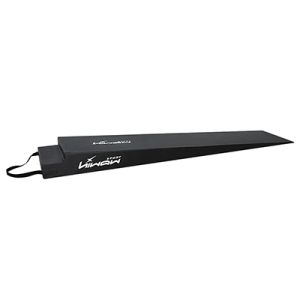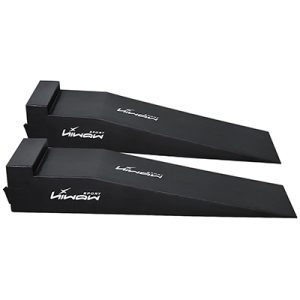Car ramps are essential components used in automotive stands and supports, providing a safe and stable platform for raising vehicles for maintenance, repairs, or inspections. They offer a more stable and less expensive alternative to hydraulic lifts or jacks. Here’s how they are commonly used in the automotive industry:
1. Vehicle Maintenance and Repairs
- Oil Changes and Underbody Inspections: Car ramps allow mechanics or car owners to raise the front or rear end of the car to access the underbody for routine maintenance, such as oil changes, exhaust system repairs, and brake inspections.
- Tire and Suspension Work: When changing tires, inspecting or replacing suspension components, or rotating tires, ramps provide easy access to the undercarriage.
2. Design Features and Benefits
- Ease of Use: Car ramps are designed to be simple to use, requiring no hydraulic pumps or jacks. The vehicle drives up the ramp and is lifted gently onto the raised platform.
- Weight Capacity: Automotive ramps come in various weight capacities, from light-duty ramps for small cars to heavy-duty models designed for trucks and SUVs.
- Durability: Made from materials like steel, aluminum, or heavy-duty plastic, these ramps are built to withstand the weight and pressure of vehicles for long-lasting use.
- Non-Slip Surfaces: Many car ramps feature textured surfaces to prevent the vehicle from slipping as it drives up or down.
3. Types of Car Ramps
- Fixed Ramps: These are sturdy, permanent structures designed to provide a stable incline for vehicles.
- Portable Ramps: These are lightweight and can be moved or stored easily when not in use. They are ideal for smaller garages or mobile repair setups.
- Folding Ramps: Ramps that can be folded for easy storage, making them convenient for home use or in tight spaces.
- Adjustable Ramps: These ramps allow users to adjust the incline or height, offering more flexibility depending on the vehicle’s size and the type of work being performed.
4. Safety Considerations
- Load Capacity: It’s crucial to use ramps that can handle the weight of the vehicle. Exceeding the recommended weight capacity can lead to the ramp bending, cracking, or collapsing, causing injury or damage.
- Positioning: Car ramps should be placed on a flat, solid surface to prevent instability. It’s also important to ensure that the ramps are aligned properly with the vehicle’s tires to avoid slippage.
- Wheel Chocks: To enhance safety, wheel chocks should be placed behind the tires of the vehicle to prevent it from rolling while on the ramps.
5. Advantages Over Other Lifting Methods
- Cost-Effective: Car ramps are generally more affordable than hydraulic lifts, making them ideal for hobbyists or small shops that don’t require complex lifts.
- Less Maintenance: Unlike hydraulic jacks and lifts, ramps have fewer moving parts and require minimal maintenance.
- Quick Setup: They are easy to position, unlike other supports that may require additional tools or time for setup.
6. Applications in Automotive Stands
- Car Showrooms: Some car dealerships use ramps to display cars in stands, elevating vehicles for a better view from different angles.
- Customizing and Detailing: For cars undergoing customization or detailing, ramps provide the height necessary for working comfortably on the undercarriage.
- Transport Vehicles: In logistics, ramps are used for loading or unloading vehicles onto transport trucks or containers, especially in situations where a loading dock may not be available.
The car ramps are a practical, cost-effective solution for safely elevating vehicles in automotive stands and support systems, aiding in everything from routine maintenance to vehicle displays and transport. Whether used by DIY car enthusiasts or professional mechanics, they are a versatile tool for working on vehicles efficiently and safely.






















